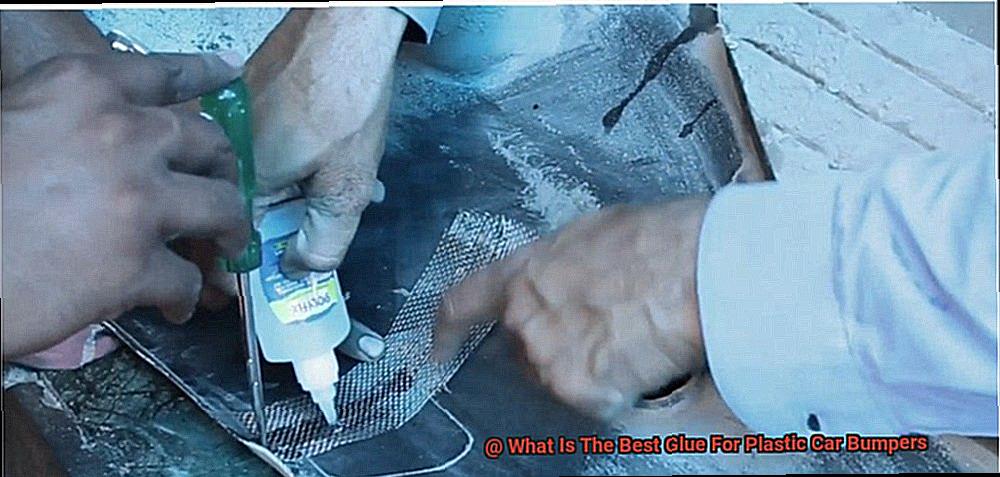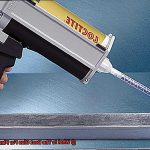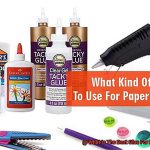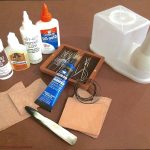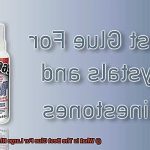As a car owner, you know the feeling of dread that comes with a damaged or broken bumper. Plastic bumpers are great because they’re lightweight, affordable, and durable. However, they’re also prone to cracking, snapping or becoming detached. Before you head to the auto body shop and spend a fortune on repairs, consider taking a DIY approach by repairing the bumper yourself. But wait. You can’t just use any glue for this job – you need the best glue for plastic car bumpers.
That’s where we come in. In this blog post, we’ll dive into the world of car bumper glue and give you all the information you need to select the right one for your plastic bumper. We’ll cover everything from what makes a good bumper glue to the different types available and their respective strengths and weaknesses. Whether it’s just a small crack or a completely detached bumper, we’ve got your back.
So let’s get started on this exciting topic and learn how to make your bumper look like new again.
What Is Plastic Car Bumper Repair?
Contents
- 1 What Is Plastic Car Bumper Repair?
- 2 Types of Glue for Plastic Car Bumper Repair
- 3 Superglue: Pros and Cons
- 4 Epoxy: Pros and Cons
- 5 Cyanoacrylate Glue: Pros and Cons
- 6 Specialized Bumper Repair Adhesives: Pros and Cons
- 7 Factors to Consider When Choosing the Best Glue for Plastic Car Bumpers
- 8 Conclusion
Plastic car bumper repair is an essential process for fixing damages that occur to the bumper of a car. While plastic bumpers are lightweight and easily molded into different shapes, they are also more prone to scratches, dents, and cracks compared to metal bumpers. But don’t worry, plastic car bumper repair is here to save the day.
Repairing plastic car bumpers involves using adhesives or fillers to fix the damaged area. There are different types of plastic used in car bumpers, including polypropylene, polyurethane, and thermoplastic olefins (TPOs). For minor damages, repairing plastic car bumpers is a cost-effective solution. However, if the integrity of the bumper has been compromised or the damage is extensive, replacing the entire bumper is necessary for safety reasons.
Before starting the repair process, it’s crucial to choose the right glue that can bond the plastic securely and withstand harsh weather conditions. Superglue is a popular option that provides a strong bond but should not be used for large cracks or holes. Epoxy, a two-part adhesive, provides an incredibly strong bond and can fill in large gaps or holes while remaining resistant to heat and harsh weather conditions.
Additionally, cyanoacrylate glue can be used for small cracks or scratches, and specialized bumper repair adhesives designed for repairing plastic car bumpers are available in the market. These adhesives provide a strong bond that can withstand harsh weather conditions.
The repair process begins with thoroughly cleaning the damaged area to remove any dirt, grime, or debris. Next, sanding down the damaged area creates a rough surface for the adhesive or filler to bond properly. The type of adhesive or filler used depends on the type of plastic used in the bumper and the extent of the damage.
Heat welding is another technique that can be used to repair plastic car bumpers. It involves melting the plastic together using a heat gun and then shaping it to match the original form of the bumper. Heat welding is commonly used for larger cracks or holes in the bumper.
Types of Glue for Plastic Car Bumper Repair
If you’re dealing with a cracked or damaged plastic car bumper, don’t worry – there’s a glue for that. But with so many types of glue available, how do you know which one is right for your specific needs?
First up, let’s talk about epoxy glue. This two-part adhesive is known for its strength and durability, making it a popular choice for plastic bumper repair. It can fix cracks, holes, and other damages on plastic bumpers with ease. However, epoxy can be challenging to work with and may require some skill to apply correctly.
If you need a quick fix, cyanoacrylate glue (also known as super glue) might be the way to go. This fast-drying adhesive can bond plastic surfaces quickly and easily. It’s ideal for small repairs like fixing minor cracks or attaching small parts to the bumper. However, keep in mind that it may not be as strong as other types of glue and can become brittle over time.
For flexibility and water resistance, silicone adhesive is a great option. It can repair cracks or gaps on plastic bumpers and is especially useful for areas that experience movement or vibration. However, it may not be as strong as other types of glue and may require longer drying times.
Polyurethane adhesive is another strong and flexible option that’s waterproof too. It’s great for larger repairs like attaching a bumper cover or repairing a torn bumper. However, it can be challenging to work with and may require some skill.
Lastly, we have plastic welding
a technique that involves heating the plastic material to create a strong bond between two pieces. This method is often used for more extensive repairs like fusing two pieces of a bumper together or repairing large cracks. However, it requires specialized equipment and may not be practical for DIY repairs.
Superglue: Pros and Cons
When it comes to repairing a cracked plastic car bumper, there are countless adhesive options available. However, one of the most popular choices among DIY enthusiasts and professionals alike is superglue, also known as cyanoacrylate glue.
Superglue boasts many advantages for bonding plastic surfaces. It is a fast-drying and strong adhesive that can bond plastic car bumpers quickly and securely. The glue’s ability to create an almost instant bond that holds up well under stress and vibration is a significant advantage. If you’re in a hurry or need a quick fix, then superglue is your go-to option. Moreover, it’s often readily available at most hardware stores and supermarkets.
However, there are also some cons to using superglue for plastic car bumpers. Firstly, it may not be suitable for all types of plastic bumpers, particularly those made from polypropylene or polyethylene. These plastics have a low surface energy, which may not provide enough adhesion for the glue to bond correctly. If you’re dealing with these types of plastics, it’s best to use an adhesive that is specifically designed for them.
Another disadvantage of using superglue is that it can be challenging to remove if you make a mistake during the bonding process. Once it dries, it becomes a hard and brittle substance that can break easily if the bumper is hit or bumped. This means that you have to be careful when applying the glue as any mistakes could lead to permanent damage to your bumper.
To summarize the pros and cons of using superglue for plastic car bumpers, here are some key points:
Pros:
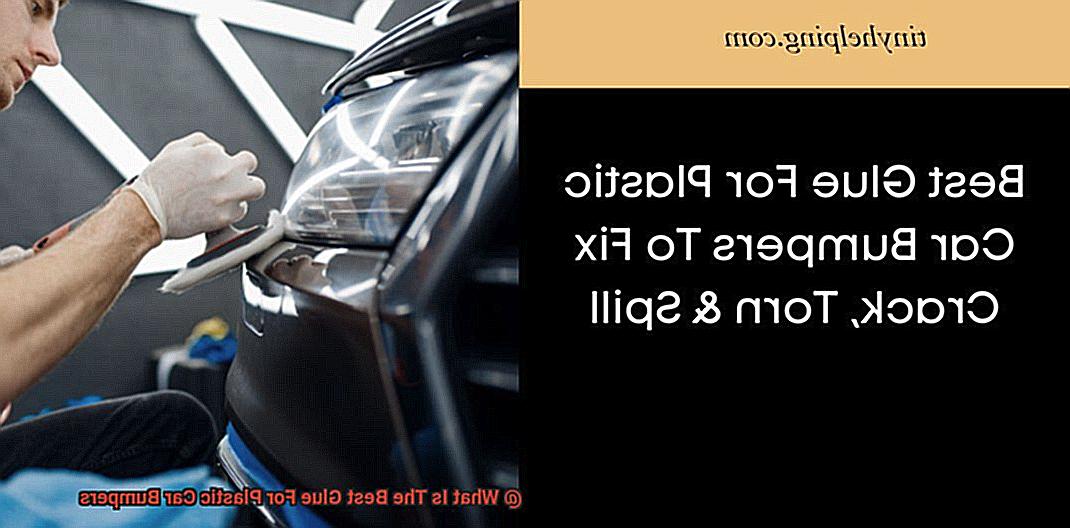
- Fast-drying and strong adhesive
- Creates an almost instant bond
- Holds up well under stress and vibration
- Readily available at most hardware stores and supermarkets
Cons:
- May not be suitable for all types of plastic bumpers
- Difficult to remove if you make a mistake during the bonding process
- Becomes hard and brittle, which can result in breakage if bumped or hit
Epoxy: Pros and Cons
If you’re seeking to repair the cracks or chips on your plastic car bumper, epoxy is a popular adhesive worth considering. As an expert in the field, I’ve compiled some essential pros and cons of using epoxy for plastic car bumper repair.
The primary advantage of epoxy is its strength. It creates a powerful bond that can withstand high levels of stress and pressure, making it ideal for car bumpers that are constantly exposed to the elements and potential impacts. Additionally, epoxy dries transparently, leaving no visible residue on your car bumper.
However, there are some significant drawbacks to using epoxy. One of the main disadvantages is its drying time. Unlike superglue, which dries instantly, epoxy can take several hours to dry completely. This can be inconvenient if you need to use your car right away.
Another potential issue with epoxy is its sensitivity to temperature. If the temperature is too low, the epoxy may not cure properly, which can weaken the bond and reduce its strength. In contrast, if the temperature is too high, the epoxy may cure too quickly, making it challenging to work with.
Lastly, if you make a mistake during the application process, epoxy can be difficult to remove. Therefore, it’s crucial to apply it carefully and accurately.
Cyanoacrylate Glue: Pros and Cons
If you’ve ever found yourself in the unfortunate situation of a damaged plastic bumper, you know how frustrating and costly it can be to get it fixed. Luckily, there are plenty of adhesive options available for plastic car bumper repair, including cyanoacrylate glue, also known as super glue. As an expert in plastic car bumper repair, I have researched and compiled a list of the pros and cons of using cyanoacrylate glue for this purpose.
Let’s explore the benefits first. One of the most significant advantages of cyanoacrylate glue is its rapid drying time. Unlike other adhesives, cyanoacrylate glue dries almost instantly upon contact, allowing for a speedy repair process. This can save you both time and money on repairs and get your car back on the road sooner.
Another essential benefit of using cyanoacrylate glue is its strong bonding properties. Once applied, cyanoacrylate glue creates a durable and robust bond between plastic surfaces, ensuring that your bumper stays intact and does not come apart easily. This means that you can drive with confidence knowing that your car is safely back on the road.
However, like all things, there are also some drawbacks to consider when using cyanoacrylate glue for plastic car bumper repair. One major disadvantage is that it can be challenging to remove if the repair goes awry or if the bumper needs to be replaced in the future. Therefore, it’s essential to use caution and precision when applying cyanoacrylate glue.
Another potential drawback of cyanoacrylate glue is that it may not be effective on all types of plastic. This means that it may not be the best option for every type of car bumper repair. Thus, it’s crucial to consult with a professional or conduct thorough research to determine if cyanoacrylate glue is suitable for your specific repair needs.
Specialized Bumper Repair Adhesives: Pros and Cons
Whether it’s a minor scratch or a major dent, it’s essential to have a reliable solution for fixing the damage. That’s where specialized bumper repair adhesives come in handy. But what are the pros and cons of using these adhesives? Let’s find out.
Pros of Specialized Bumper Repair Adhesives
- Strength: One of the biggest advantages of specialized bumper repair adhesives is their strength. These adhesives are specifically designed to bond with plastic materials and provide a strong, long-lasting repair that can withstand daily use. When using specialized bumper repair adhesives, you can rest assured that the repair will be as strong as the original bumper material.
- Ease of Use: Another advantage of these adhesives is their ease of use. Most specialized bumper repair adhesives come in easy-to-use tubes or syringes, making them ideal for even novice DIYers. You can easily apply these adhesives correctly without worrying about any mess or complicated procedures.
Cons of Specialized Bumper Repair Adhesives
- Cost: One of the biggest drawbacks of using specialized bumper repair adhesives is that they can be more expensive than other types of adhesives. However, keep in mind that these adhesives offer stronger and more durable bonds than other options, which can make them worth the extra cost.
- Equipment Requirements: Some types of specialized adhesives require special equipment or tools to apply correctly, which can add to the overall cost of the repair. If you don’t have access to these tools, you may need to factor in the added expense of renting or purchasing them.
- Suitability: Another potential downside is that specialized bumper repair adhesives may not be suitable for all types of damage. In some cases, such as when the damage is extensive or affects a critical part of the bumper, it may be necessary to replace the entire bumper rather than attempting a repair. It’s essential to assess the extent of the damage before using specialized bumper repair adhesives.
Conclusion
Factors to Consider When Choosing the Best Glue for Plastic Car Bumpers
To ensure a successful and long-lasting fix, there are several critical factors to keep in mind when selecting the best adhesive for your plastic car bumper.
First and foremost, it’s essential to determine what type of plastic your bumper is made of. Different plastics require different adhesives, so it’s crucial to know what you’re working with before selecting a glue. You can typically find this information in your car’s manual or by consulting a professional.
Another crucial factor to consider is the strength of the adhesive. Plastic car bumpers are often subjected to a lot of stress and strain, so you’ll need an adhesive that can withstand these pressures. Look for high tensile strength adhesives that can bond well with both the plastic bumper and any other materials that you might be attaching to it.
Timing is everything when it comes to gluing plastic car bumpers. The drying time of the adhesive is also an important consideration. Some glues dry quickly, while others take longer to set. If you’re working on a time-sensitive project or need to use your car soon after gluing the bumper, you’ll want to choose a fast-drying adhesive.
Temperature range is another critical factor to keep in mind. Plastic car bumpers can be exposed to extreme temperatures, so you’ll need a glue that can hold up well under these conditions. Look for adhesives that are heat-resistant and can withstand cold temperatures without becoming brittle or losing their adhesive properties.
Finally, ease of use is an essential factor to consider when choosing the best glue for your plastic car bumper. Some adhesives require mixing or special application techniques, while others are more straightforward. If you’re not experienced with using adhesives, you may want to choose one that is easy to apply and doesn’t require any special tools or techniques.
7K4dImEI_Vk” >
Conclusion
In conclusion, plastic car bumper repair is a crucial process for maintaining the appearance and safety of your vehicle. When it comes to choosing the best glue for plastic car bumpers, there are several factors to consider. The type of plastic used in your bumper, the strength and drying time of the adhesive, its temperature range, and ease of use are all important considerations.
Luckily, there are a variety of options available on the market including superglue, epoxy, cyanoacrylate glue, silicone adhesive, and polyurethane adhesive. Each has its own unique benefits and drawbacks depending on your specific needs.
While DIY repairs can be a cost-effective solution for minor damages, it’s important to note that if the integrity of the bumper has been compromised or the damage is extensive, replacing the entire bumper may be necessary for safety reasons. Heat welding is another option for repairing plastic car bumpers but requires specialized equipment and may not be practical for DIY repairs.
Ultimately, with proper research and selection of an appropriate adhesive based on your specific needs and requirements, you can restore your car’s original look without breaking the bank.

